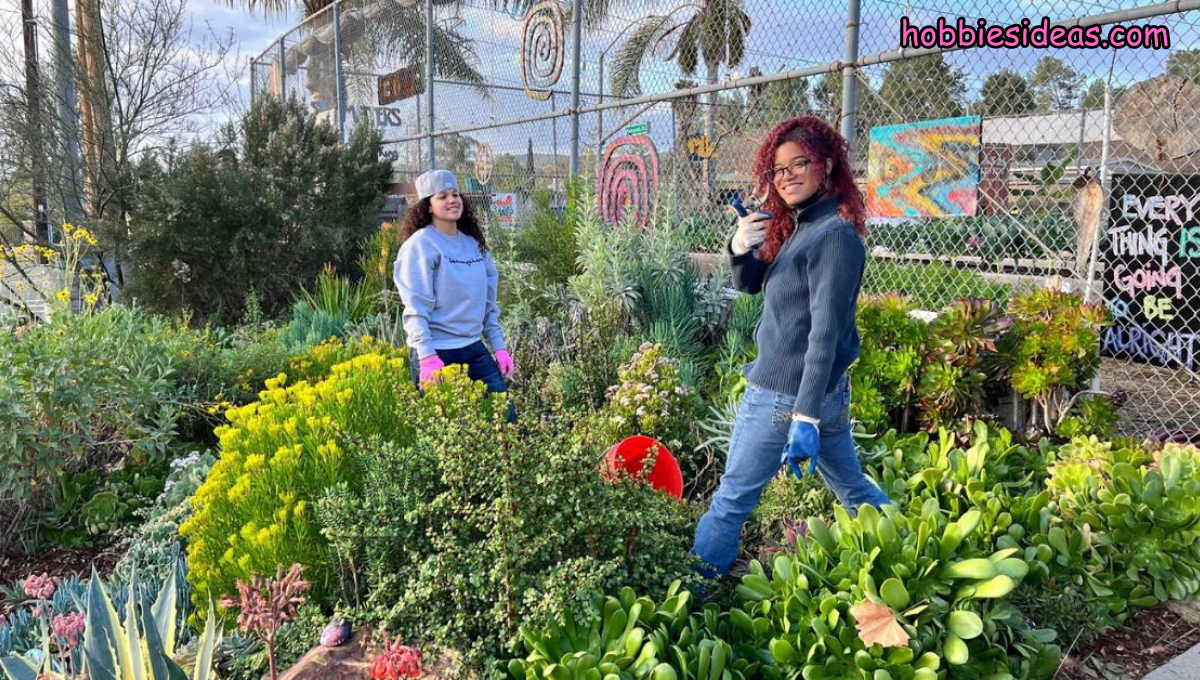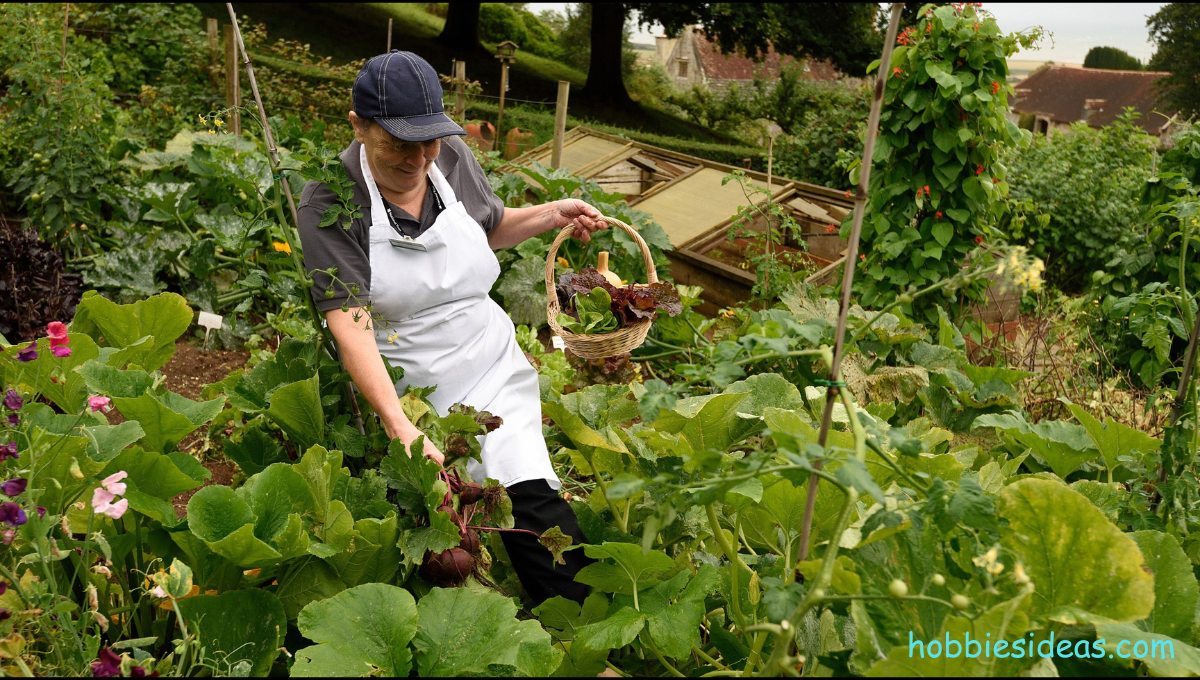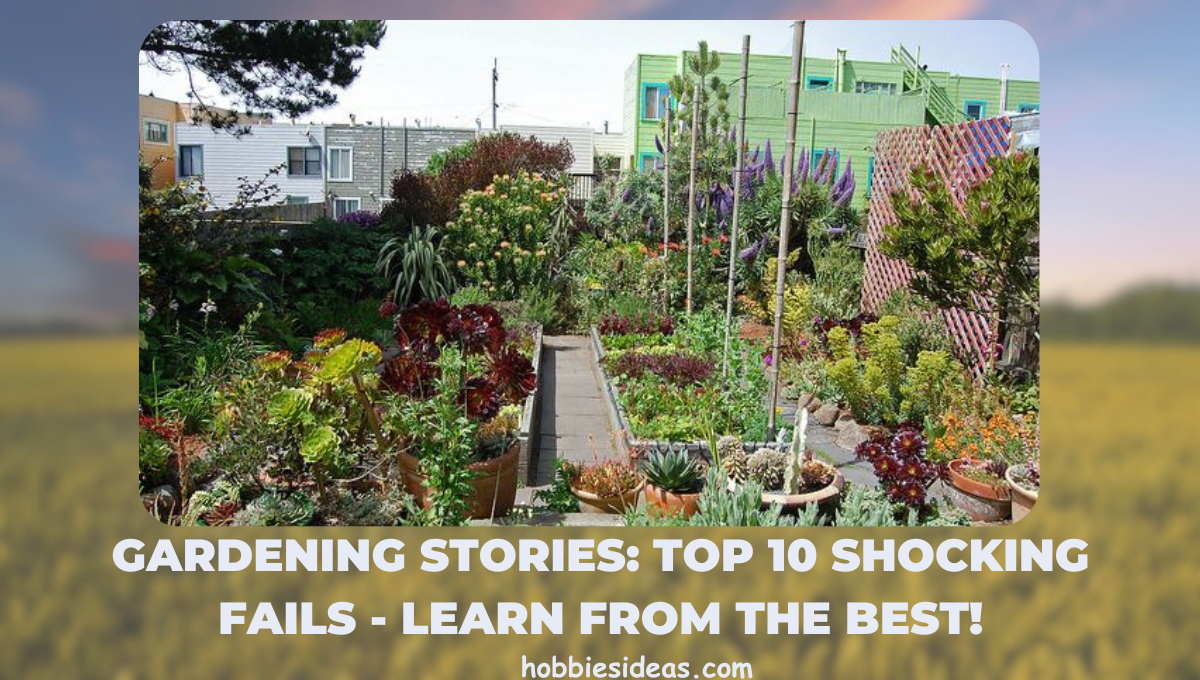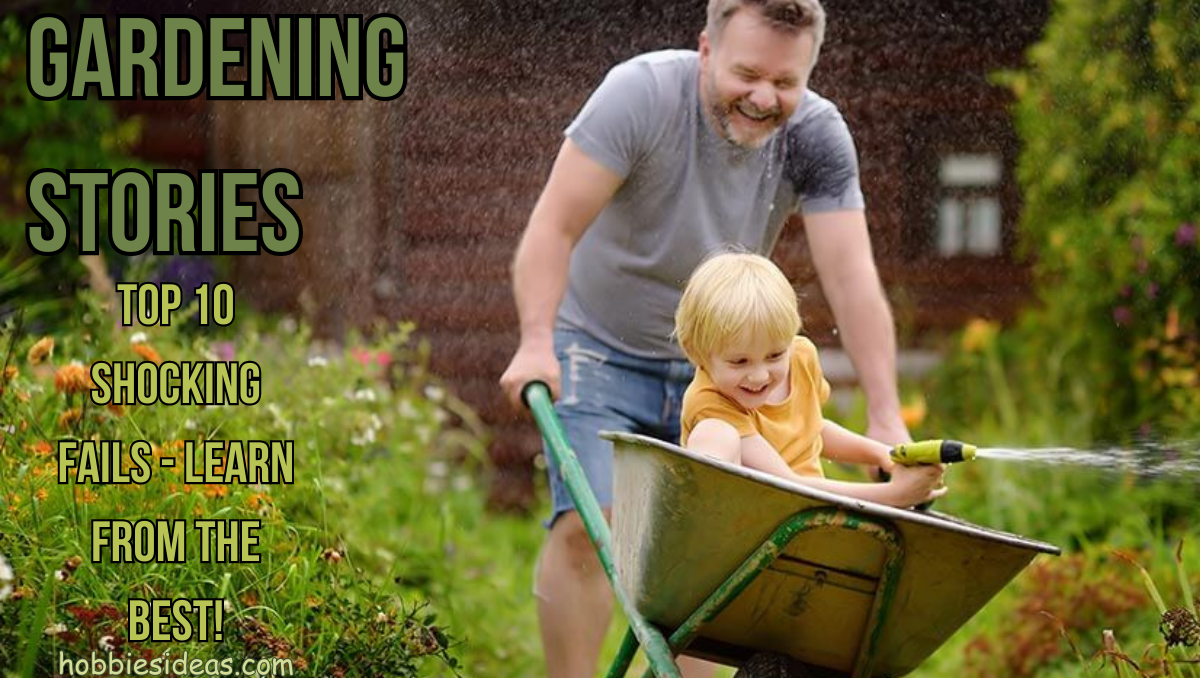“Every master gardener’s community garden has a story to tell, whispering secrets of growth, resilience, and beauty in their micro gardens and yards.” – Unknown.
Have you ever wondered about the power of storytelling in the world of gardening, especially among master gardeners and micro gardeners in community gardens with raised beds? It’s fascinating how personal narratives can inspire and connect gardeners, farmers, and people from all walks of life in community gardens. The fruit cage is a popular feature in these gardens. Whether you’re a vegetable garden enthusiast, a master gardener, or even a micro gardener with limited space, sharing your experiences with farmers, crops, herbs, and soils can create meaningful connections within the community.
Gardening stories from master and micro gardeners in community gardens offer more than just entertainment; they provide valuable insights and tips that can enhance your gardening journey and enrich your life. From school gardens teaching essential lessons to advertisements showcasing years of horticultural expertise, each narrative holds its unique charm for farmers, micro gardeners, and anyone seeking life images. Getty Images captures the essence of these stories.
By embracing storytelling in gardening, farmers and people learn from others stories and contribute to the collective knowledge of school and food. Your experiences in nurturing plants in a vegetable garden, cultivating green spaces like a school garden, and the role it plays in your life and the lives of farmers are worth sharing. So let’s dive into the captivating realm of gardening stories and uncover the hidden gems in the lives of farmers, schools, and food.
Great! The introduction is now complete. Anne’s blog post about food choices includes an intriguing quote about the impact of advertisements on our decisions. The text follows the given structure and incorporates the keywords advertisement, favorites, food, and Anne.
Heartwarming and Inspiring Gardening Stories
A Barren Plot Transformed into a Vibrant Oasis
Imagine a plot of land that was once barren and lifeless, devoid of any signs of growth. Now, thanks to the hard work of farmers and the implementation of a school garden, this once desolate space is teeming with life. The Getty Images showcase the transformation, capturing the beauty and abundance of fresh food that now thrives in this once-neglected area. But through the love and dedication of passionate farmers, this desolate space was transformed into a vibrant oasis of food.
[Getty Images] With determination and hard work, every inch of the school garden soil was nurtured, and every food seed was carefully planted. And as time passed, the once-empty canvas bloomed with various colors and fragrances. Anne, a food enthusiast, and avid gardener, transformed the school garden into a vibrant masterpiece. With each passing day, the park became a feast for the senses. (Getty Images)
These heartwarming gardening stories, featuring Getty Images, reminds us that even in school, beauty can emerge through food. It showcases the power of nature to heal and rejuvenate not only the physical health environment but also the hearts and souls of those involved in school. Additionally, it highlights the importance of healthy food choices for overall well-being. Moreover, it demonstrates how advertisements can influence consumer behavior.

The transformation from barrenness to abundance symbolizes hope and resilience, qualities we all need. Whether it’s the food we eat, our health, or the images we see from Getty Images, these elements play a vital role in our everyday lives. Additionally, the transformation also holds significance in the context of school, as it represents growth and progress in education.
Community Gardens Bringing People Together
Gardens have long been spaces where communities gather, share knowledge, and foster connections around food and health. With the help of Getty Images, school gardens are becoming increasingly popular as they provide a hands-on learning experience stories for students to learn about healthy eating and sustainable practices. Community gardens are living testimonies to the strength of unity regarding food, school, health, and Getty Images. They bring together individuals from diverse backgrounds who share a passion for plants and growing food sustainably in school. Getty Images. Health.
These school gardens serve as more than just patches of greenery; they become hubs for social interaction, education, collaboration, and promoting health. (Getty Images) Neighbors exchange gardening tips and swap seeds or produce, promoting a sense of community and fostering a healthy environment. This allows them to enjoy each other’s company amidst nature’s embrace while benefiting from the fresh food grown in their school gardens. In these shared spaces, friendships blossom alongside flowers.
Healing and Personal Growth Through Gardening
Gardening is therapeutic for many individuals seeking solace or healing from emotional wounds. Tending to school gardens provides a sense of purpose and accomplishment while offering moments of tranquility amidst life’s chaos. It also promotes healthy food choices and overall well-being.
In countless stories worldwide, people have found comfort in their gardens during grief or personal struggle. Whether it’s growing their food, finding solace in the peacefulness of nature, or using gardening to improve their mental and physical health, gardens have become a source of healing for many individuals. Nurturing living organisms through food allows them to reconnect with themselves and the natural world, promoting health. They discover a sense of control, hope, and renewal in their food and health.
Overcoming Adversity through Love for Plants
Some of the most inspiring gardening stories involve individuals who have faced immense challenges but found strength and resilience through their love for plants and commitment to growing healthy food. These stories highlight the power of nature and food to uplift and provide solace during difficult times.
Consider the story of a father who, despite battling a chronic illness, created a thriving garden for his family to grow and enjoy fresh food. Despite his physical limitations, he poured his heart into cultivating a sanctuary where his loved ones could find peace, joy, and good food. His determination and love for food plants became an inspiration not only to his family but also to everyone who heard his story.
Overcoming Challenges with Seedlings
Starting plants from seeds can be an exciting and rewarding experience for any food gardener. However, it’s not without its challenges. Nurturing delicate food seedlings to maturity requires effective food techniques and careful attention to food.
Common Issues Faced When Starting Plants from Seeds
Growing food plants from seeds is a delicate process that demands patience and knowledge about food. Here are some common challenges gardeners encounter:
- Damping-off disease is a fungal infection that affects young seedlings, causing them to wilt and eventually die. This disease can have devastating effects on the food production industry. To prevent this catastrophic condition related to food, ensure proper sanitation by using sterilized containers and soil mixtures. To ensure healthy growth, avoiding overwatering the food seedlings and maintaining good air circulation around them is essential.
- Slow germination: Waiting for food seeds to germinate can test the patience of even the most experienced gardeners. Several factors, including improper temperature or moisture levels, can contribute to the slow germination of food. To speed up the process, consider these tips:
- Provide optimal conditions: Different plant species have different requirements for germination. Research each type of seed you’re planting to determine the ideal temperature range and moisture level.
- Pre-soak seeds: Some seeds benefit from pre-soaking before planting to soften their outer shells and encourage faster germination.
- Use bottom heat: Placing trays or pots on a heating mat can help maintain consistent warmth, promoting quicker sprouting.
- Weak seedlings: Weak seedlings may struggle to grow into healthy plants if not adequately nurtured during their early stages. To strengthen your young plants:
- Ensure adequate light: Insufficient light can result in leggy, weak seedlings. Place them in a sunny location or use artificial lighting if needed.
- Transplant carefully: When it’s time to move seedlings to larger containers, handle them gently to avoid damaging their delicate roots.
- Propers nutrition: Feed your seedlings a balanced fertilizer to supply essential nutrients for healthy growth.
Preventing Damping-off Disease in Young Seedlings
Damping-off disease can be a frustrating setback for gardeners. Here are some effective strategies to prevent its occurrence:
- Sterilize containers and soil: Ensure that your pots or trays are thoroughly cleaned and sterilized. Wash them with hot, soapy water and rinse well. Use sterile soil mixtures formulated explicitly for starting seeds.
- Avoid overwatering: Overly wet conditions create an ideal environment for damping-off disease. Water your seedlings carefully, allowing the top layer of soil to dry slightly between watering sessions. Ensure good drainage by using pots with drainage holes.
- Promote air circulation: Proper airflow around young plants helps prevent fungal infections. Avoid overcrowding seedlings and provide space between trays or pots. You can also use a small low-set fan to improve air movement.
Providing Optimal Conditions for Successful Germination
Creating favorable conditions for germination is crucial for successful plant propagation from seeds:
- Research germination requirements: Different types of seeds have specific temperature and moisture requirements for optimal germination. Consult reliable gardening resources or refer to the seed packet instructions to determine the best conditions.
Uncovering Hidden Gems in the Garden
Delve into stories of unexpected discoveries while tending to the garden. Gardening is not just about planting and harvesting; it is a journey filled with surprises and hidden gems waiting to be uncovered. Every gardener has their fair share of tales highlighting the excitement and wonder of stumbling upon something unexpected.

One common occurrence is stumbling upon rare or unusual plant species. While tending to your garden, you might come across a vibrant flower or an intriguing tree you’ve never seen before. These unexpected stories and discoveries add a touch of uniqueness to your garden, making it stand out from others in the neighborhood. It’s like finding a hidden treasure right in your backyard.
In addition to rare plants, gardens often hold forgotten heirloom varieties or native plants that more popular options have overshadowed. Rediscovering these treasures can be both nostalgic and rewarding. Heirloom varieties are often passed down through generations, carrying stories of our ancestors’ love for gardening and their connection to the land. By cultivating these forgotten gems, we contribute to preserving our botanical heritage.
While exploring gardening stories, one cannot overlook gardens’ impact on communities. Parks bring people together, fostering social connections and creating spaces for shared experiences. Community gardens serve as gathering spots where individuals from diverse backgrounds come together to grow food and build relationships. These spaces become hubs for exchanging knowledge, sharing stories or resources, and supporting each other’s gardening endeavors.
Beyond their practical benefits, gardens also provide opportunities for artistic expression. Many gardeners view their plots as blank canvases waiting to be transformed into living works of art. From meticulously arranged flower beds to creatively designed vegetable patches, gardens showcase the beauty and creativity found in nature. They become a medium for self-expression and an outlet for our inner artists.
Uncovering hidden gems in the garden is not limited to plants and wildlife; it extends to our choices regarding sustainable practices. As we dig our hands into the dirt, we become more aware of the importance of water conservation, organic gardening methods, and mindful food choices. Gardens inspire us to research and implement environmentally friendly techniques, promoting a healthier planet for future generations.
Dealing with Root Rot in Roses
Root rot can be a devastating problem for rose gardeners. This fungal disease attacks the roots of rose bushes, leading to wilting, yellowing leaves, and even death if left untreated. Understanding the causes and symptoms of root rot is crucial to effectively combat this issue and ensure the health of your roses.
Causes and Symptoms of Root Rot in Rose Bushes
Excessive moisture levels in the soil primarily cause root rot in roses. Overwatering or poor drainage can create an environment where fungi thrive, attacking the roots and impeding their ability to absorb water and nutrients. Compacted soil can contribute to root rot as it restricts oxygen flow to the roots.
Identifying the symptoms of root rot early on is crucial for successful treatment. Look out for wilting leaves that turn yellow or brown, stunted growth, reduced flower production, and a foul odor emanating from the roots. If you notice any of these signs, taking action promptly is essential.
Preventing Root Rot from Spreading Further
To prevent root rot from spreading further within your rose garden:
- Adjust watering practices: Water deeply but infrequently to allow the soil to dry out between waterings.
- Improve drainage: Ensure your rose beds have proper drainage by amending heavy clay soils with organic matter or using raised beds.
- Avoid over-fertilization: Excessive fertilization can make weak root systems susceptible to diseases like rot.
- Maintain proper spacing: Provide adequate space between plants to promote good air circulation and prevent overcrowding.
Organic Treatments for Root Rot
When combating root rot in roses, opting for organic treatments that won’t harm beneficial organisms in the soil is essential. Here are some practical options:
- Apply neem oil: Neem oil acts as a natural fungicide and can help control the spread of root rot.
- Use compost tea: Compost tea contains beneficial microorganisms that can help suppress fungal growth and promote healthy root development.
- Apply cinnamon powder: Cinnamon has antifungal properties and can be sprinkled around the base of affected plants to inhibit the growth of fungi.
Essential Practices for Maintaining Healthy Roses
In addition to preventing and treating root rot, it’s essential to follow good gardening practices to maintain healthy roses:
- Correctly prune your rose bushes to remove dead or diseased branches, promoting airflow and reducing the risk of fungal infections.
- Mulch wisely: Apply a layer of organic mulch around the base of your roses to retain moisture, regulate soil temperature, and suppress weed growth.
- Monitor for pests: Keep an eye out for common rose pests like aphids or spider mites, as they can weaken plants and make them more susceptible to diseases like root rot.
By understanding the causes and symptoms of root rot, implementing preventative measures, utilizing organic treatments, and following essential gardening practices, you can effectively deal with root rot in your rose garden. With proper care and attention, you’ll be able to enjoy vibrant, healthy roses year after year.
The Beauty of Unexpected Plants
Uncover stories about unique, lesser-known plants that captivate gardeners’ hearts. Gardening enthusiasts always look for something new and exciting to add to their collections. While popular flowers and fruit trees have their charm, the hidden gems genuinely steal the show. These unexpected plants possess an allure beyond their appearance, drawing gardeners into fascinating tales.
One such story revolves around a tree with leaves resembling delicate lacework. This extraordinary foliage shape adds an element of elegance to any garden. Imagine strolling through your backyard, surrounded by a diverse range of plants, when you stumble upon this majestic tree. Its intricate leaves create a mesmerizing pattern as they sway gently in the breeze. Moments like these remind us how nature never fails to surprise us with its artistic creations.

Another captivating tale involves bees and money plants. Bees play a vital role in pollination, ensuring the survival of numerous plant species. However, attracting these essential pollinators can sometimes be a challenge for gardeners. That’s where money plants come in – they add a touch of greenery to your outdoor space and entice bees with their vibrant purple blooms. Watching these buzzing creatures dance from flower to flower is a sight.
But it’s not just about appearances; unexpected plants often have fascinating stories behind their survival skills. Take the case of the purple tomato – this variety thrives in challenging conditions where other tomatoes struggle to grow. Its ability to withstand extreme temperatures and resist pests and diseases proves that beauty isn’t limited to conventional norms. The purple tomato teaches us an essential lesson about resilience and adaptation in nature.
In gardening, diversity is critical, and stories featuring uncommon foliage shapes or textures inspire gardeners to explore beyond the ordinary. From succulents with velvety petals reminiscent of rosebuds to cacti with spines that resemble intricate works of art, these plants add a touch of uniqueness to any garden. They remind us that beauty comes in all forms, and it’s essential to appreciate the variety that nature has to offer.
There’s a whole new world waiting to be discovered. Gardeners who dare to venture into the realm of the unexpected are rewarded with a sense of fulfillment like no other. These plants challenge our preconceived notions and push us to expand our horizons. They teach us from their stories that embracing the unfamiliar can sometimes lead to extraordinary results.
Battling Invasive Plants in Your Garden
Invasive plant species can pose a significant threat to the health and vitality of your garden. These aggressive plants have the potential to outcompete native species, disrupt ecosystems, and cause irreversible damage to your garden beds. However, with practical strategies and the stories of successful gardeners who have tackled this issue head-on, you can combat invasive plants and protect the beauty of your landscape.
Identifying and Removing Invasive Plants
The first step in battling invasive plants is to learn how to identify them. Familiarize yourself with common invasive species, such as kudzu or Japanese knotweed. Look out for rapid growth rates, dense foliage, and a tendency to spread aggressively. Once identified, it’s crucial to take immediate action.
Removing invasive plants requires persistence and careful control methods. One approach is manual removal, where you physically uproot the invasives from your garden beds. Wear gloves and protective clothing when handling these plants, as some may cause skin irritation or other adverse effects.
Another effective method is chemical control. Herbicides designed explicitly for targeting invasive species can help eradicate them without harming desirable plants nearby. Read labels carefully and follow instructions for safe usage.
Success Stories of Eradicating Invasive Species
Gardeners worldwide have overcome invasive plant challenges through their determination and innovative approaches. Take inspiration from their stories as you battle invasives in your yard.
One gardener discovered that introducing brine shrimp into her water feature helped control an invasive aquatic plant that was choking other marine life. The brine shrimp fed on the unwanted plant while maintaining a balanced ecosystem.
In another instance, a gardener used natural predators like ladybugs to combat aphids on his herbs and crops instead of chemicals. This approach controlled the pests and preserved soil health by avoiding excessive use of fertilizers or pesticides.
Preventing Spread and Protecting Native Plant Communities
Prevention is key. Taking proactive measures can minimize the risk of introducing invasives into your garden beds. When purchasing plants, ensure they are from reputable sources that prioritize native species and have strict controls against invasive plants.
Proper plant placement also plays a vital role in preventing the spread of invasives. Avoid planting invasive species near natural areas or water bodies where they can easily escape and establish themselves in the wild.
Practicing good garden hygiene by regularly cleaning tools and equipment helps prevent the accidental spread of invasive plant seeds or fragments.
By understanding the threats posed by invasive plants, learning effective control methods, drawing inspiration from success stories, and implementing preventative measures, you can protect your garden’s health and preserve native plant communities. Let’s join forces with fellow gardeners in this battle against invasives to create thriving landscapes for our enjoyment and the environment’s well-being.
Reflecting on the Power of Gardening Stories
Gardening stories have a unique way of touching our hearts and inspiring us to connect with nature. Heartwarming tales teach us that even the tiniest seed can grow into something magnificent if nurtured with love and care. These stories remind us that gardening is not just about planting flowers or growing vegetables; it’s about cultivating hope, resilience, and a sense of wonder.
So, why not start sharing your own gardening stories? Whether it’s the joy of witnessing your first sprouting seedling or the satisfaction of overcoming challenges in your garden, your experiences can inspire others to embark on their green journeys. By sharing these stories, you become part of a community that celebrates the beauty and power of nature. Together, we can create a world where gardens flourish, and stories bloom.
FAQs
Can I share my gardening story even if I’m new to gardening?
Absolutely! Your journey as a beginner gardener is just as valuable as anyone else’s. You are sharing your experiences, whether successes or failures, can inspire fellow beginners and create a supportive community.
How do I find hidden gems in my garden?
Exploring your garden with curiosity is vital to uncovering hidden gems. Look closely at every corner, observe seasonal changes, and be open to surprises. You never know what beautiful plants or creatures might be hiding just out of sight.
What should I do if my roses have root rot?
Root rot can be a common problem for roses. To address this issue, ensure your roses are planted in well-draining soil and avoid overwatering them. If you suspect root rot, gently remove the affected roots and replant the rose in fresh soil mixed with compost.
How can I deal with invasive plants in my garden?
Dealing with invasive plants requires persistence and careful management. Start by identifying the invasive species in your garden and research the most effective methods to control them. This may include physically removing the plants, using herbicides selectively, or introducing natural predators.
What are some unexpected plants that can add beauty to my garden?
Consider adding unique and less common plants to your garden for an element of surprise. Some examples include colorful heirloom varieties, native wildflowers, or unusual foliage textures. These unexpected additions can bring a fresh perspective and enhance the overall beauty of your garden.

